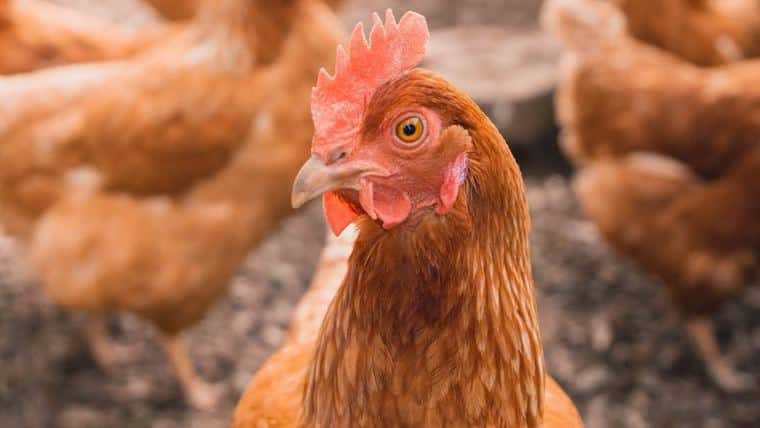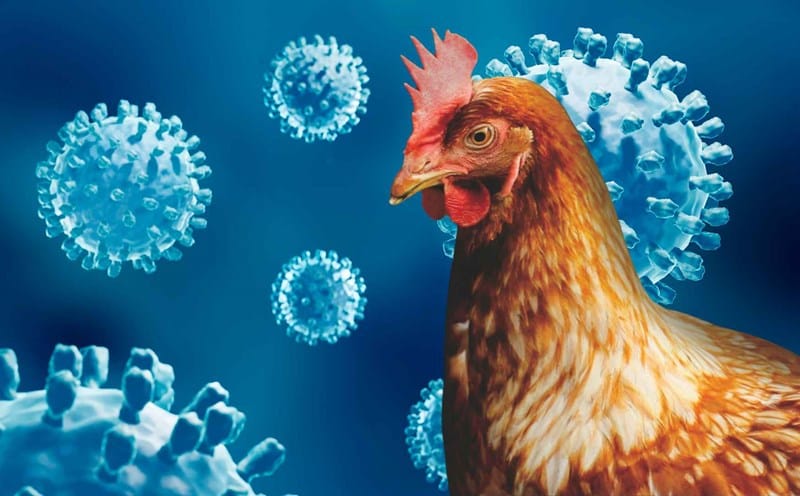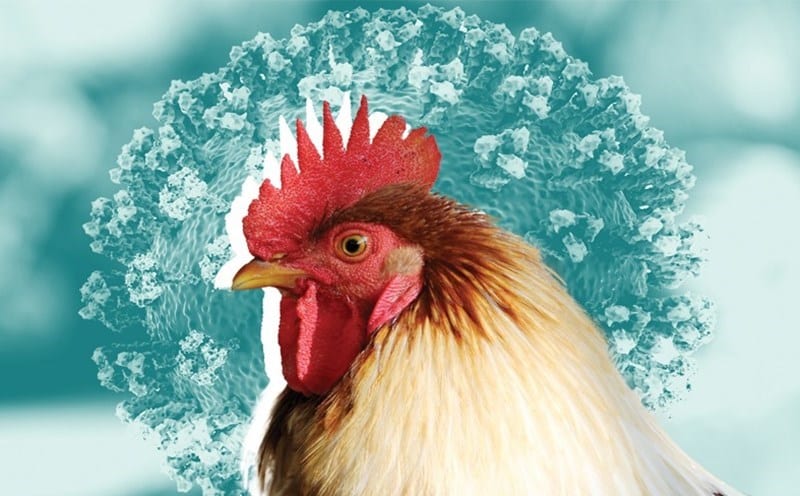Avian influenza in chickens is a dangerous disease with high mortality and infection rates and can be transmitted to humans.
Avian influenza is one of the most dangerous diseases and seriously affects the livestock industry, with high morbidity, infection and mortality rates, possibly up to 100% and is one of the diseases that must be destroyed when detected. So how to know if your chickens have bird flu?
I. CAUSES OF THE DISEASE
Avian influenza is an infectious disease caused by type A influenza virus of the Orthomyxoviridae. Influenza A virus infects poultry, some mammals and can spread to humans. The World Organization for Animal Health (OIE) lists Highly Dynamic Avian Influenza (HPAI) in the category A. Influenza viruses reside in migratory waterfowl such as storks, geese, mallards, etc. So the ability to spread the disease is very wide and difficult to control.

Image of avian influenza in chickens
And the disease can spread through the respiratory tract of livestock through a direct form: The disease is transmitted from animals infected with avian influenza to healthy poultry flocks. Or indirect transmission: The disease is transmitted through air, livestock equipment, vehicles, garbage, food, drinking water containing pathogens and intermediate animals to poultry flocks, etc.
II. SYMPTOMS OF THE DISEASE
Symptoms of bird flu depend on the strain of the virus and the severity of the disease. Common symptoms include:
Poultry can die suddenly, with a high death rate of 20-100%. Sick chickens often have high fevers, are depressed, stop eating and drinking, have reduced fertility, have teary eyes, stand huddled in one place, have ragged feathers, have swollen heads and eyes, and have bruised and bleeding skin on hairless skin and gray mucus, difficulty breathing, stretching the neck to breathe, wheezing, sneezing. The animal has watery eyes and nose, conjunctivitis, and closed eyes. Swelling of the head, the crest of the bib is pale and dark purple. The animal has neurological symptoms such as convulsions, loss of balance, and spinning movements. Chicken has diarrhea, yellow-green, or green-white stools with a fishy smell.

Image of avian influenza in chickens
III. PREVENTION MEASURES
Prevention of avian influenza is an important factor in minimizing economic losses and protecting public health.
1. The first and most important is vaccination:
Vaccination of poultry is the most effective measure to prevent disease. Vaccines need to be administered periodically as recommended by veterinary authorities.
2. Animal husbandry hygiene management:
- Clean the barn regularly, remove manure and waste.
- Clean and decontaminate livestock equipment, feeding troughs, and drinking troughs periodically.
- Restrict people, strange animals and vehicles from entering livestock areas.
3. Control of transport and import of poultry:
Inspect and quarantine imported poultry to prevent the entry of influenza virus from epidemic areas.

Image of avian influenza in chickens
4. Monitoring and checking poultry health:
Monitoring poultry health, early detection and timely handling of suspected cases of infection. Periodically supplement supplements such as Glucan C to increase the resistance of poultry.
5. Instructions and training:
Raising farmers’ awareness of measures to prevent and handle avian influenza.
Avian influenza is a very dangerous disease and can be transmitted to humans, thus greatly affecting public health. So when you detect a disease, you must notify the local authorities and destroy the entire poultry herd to ensure disease safety and your own health.
Through these information, farmers can recognize avian flu in chickens, as well as know how to prevent this disease effectively and protect their health.
